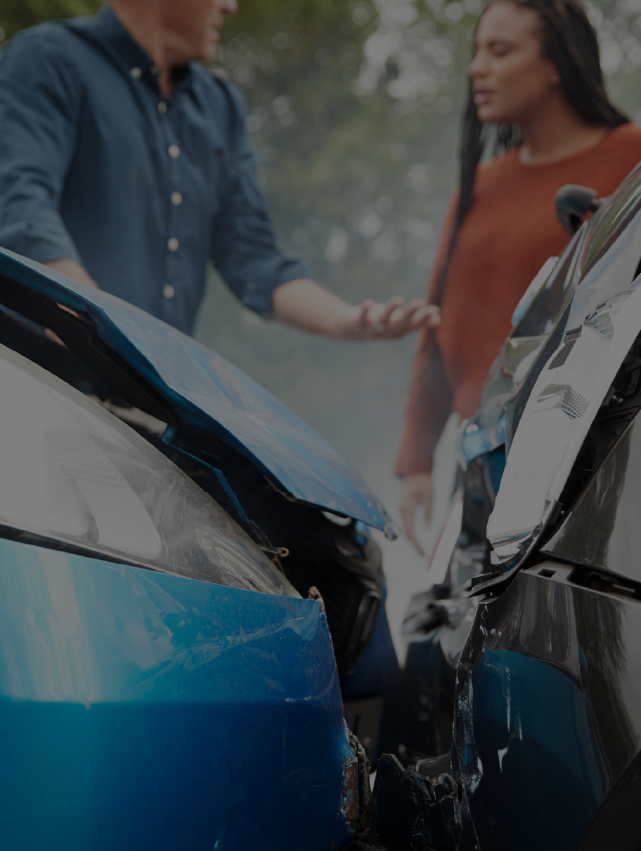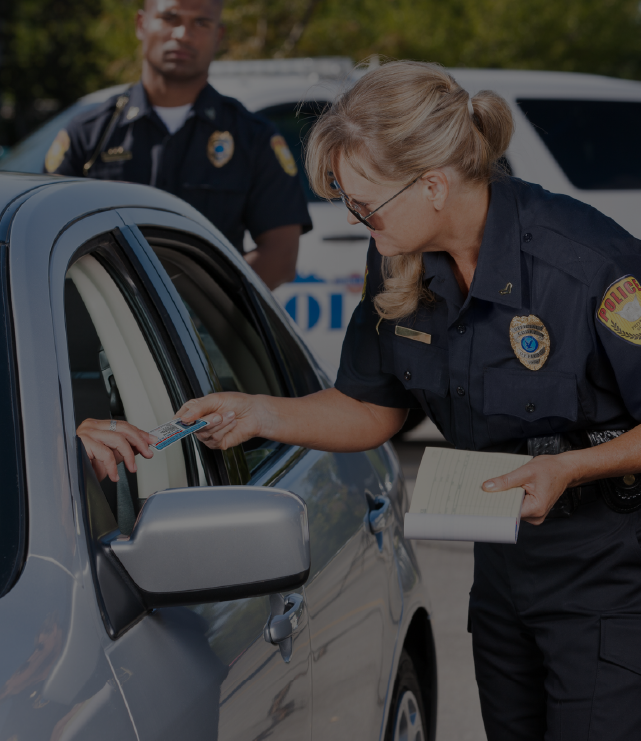We have all felt annoyed and impatient while driving. But when that feeling escalates into anger-fueled actions, the situation can turn dangerous fast. Road rage is a crime that occurs when a driver intentionally takes aggressive, harmful actions against someone else on the road. The statistics below help illustrate the causes and shocking impacts of road rage in the United States. If an angry driver’s dangerous actions behind the wheel have harmed you or someone you love, you may have the right to receive compensation. Contact an experienced a car accident lawyer who can explore your options and fight for your rights. The terms road rage and aggressive driving are sometimes used interchangeably, but they are distinct concepts. Aggressive driving consists of any driving behavior that carelessly or recklessly endangers another driver, such as speeding, tailgating, or weaving in and out of lanes. Aggressive drivers do not necessarily mean to cause harm to others. However, they ignore the likely consequences of their dangerous actions. Law enforcement typically treats aggressive driving as a moving violation punishable by ticketing and a civil penalty, although aggressive drivers may face criminal liability if their conduct triggers an accident. In contrast, road rage involves purposefully harmful driver behaviors. It occurs when a driver operates a vehicle in a manner intended to intimidate, threaten, or injure someone else on the road. Any of the aggressive driving actions listed above can constitute road rage if they are done with an intent to harm. Road rage can also take the form of even more extreme conduct like intentionally rear-ending, sideswiping, or shooting at another vehicle. Authorities virtually always treat road rage as a crime punishable by fines and imprisonment. Estimates vary of the number of fatalities linked to road rage every year; hard numbers are not easy to come by. But by all accounts, road rage fatalities represent a severe and growing problem in the United States, albeit one that remains relatively small compared to other risky driving behaviors like drunk driving, impaired driving, distracted driving, and drowsy driving. On the low end of available estimates, a decades-old Pew Charitable Foundation reported a troubling rise in road rage incidents during the pandemic, citing unspecified data from the National Highway Transportation Safety Administration (NHTSA) that linked 446 crashes and 502 deaths to road rage in just one year. And a study conducted by the advocacy group Everytown for Gun Safety found that 131 people were shot and killed in road rage incidents in one year—the highest such tally on record and likely a fraction of the total number of road rage-related deaths that year (many of which assuredly did not involve gun violence). Let’s not forget that non-fatal road rage incidents also cause severe trauma. The AAA study above estimated that road rage led to thousands of crash injuries per year. Little doubt that the number has grown along with the apparent rise in fatalities. According to the NHTSA’s Fatality and Injury Reporting System Tool (FIRST), one common road rage-related driving behavior—speeding— plays a role in hundreds of thousands of injury-causing crashes annually. Numerous factors contribute to road rage, often working in combination. According to the NHTSA, traffic delays and congestion tend to trigger extreme driving behaviors. So do running late, drivers’ feelings of anonymity while inside a vehicle, drivers’ disregard for others’ safety or the law, and drivers’ habitual or clinical aggressiveness behind the wheel. Knowing the causes of road rage, however, does not excuse it. Drivers stray far beyond the bounds of normal conduct when they engage in road rage behaviors. They can and should be held accountable to anyone harmed by their actions. Here are some more surprising facts about the root causes of road rage: Teens mirror their parents’ bad driving habits in almost equal amounts. Traffic congestion is one of the most frequently cited reasons for aggressive driving. Men are more likely to honk, speed, or cut off other drivers, whereas women are more likely to swear, make a rude gesture, or intentionally tailgate. Angry drivers get angry more easily and more frequently, are more likely to react impulsively, and express their feelings more aggressively. At least 94% of traffic crashes are caused by human error. It’s possible to reduce road rage among high-anger drivers through a series of cognitive and relaxation techniques. People who use alcohol and drugs, including cannabis, are more likely to experience road rage. People who cover their cars in stickers and other adornments are more likely to engage in road rage behavior. Studies have revealed that feeling anonymity while driving contributes to road rage. More drivers are on the road now than ever before, contributing to the growing problem of road rage. An estimated 80 percent of Americans frequently express significant anger while driving. Many do not realize that road rage is a criminal offense. A study analyzed 10,000 road rage incidents over 7 years and found they caused at least 218 murders and 12,610 injury cases. 56% of fatal crashes from 2003 to 2007 involved aggressive driving and speeding was the most common factor. Road rage incidents involving firearms more than doubled between 2014 and 2016. The increase in road rage incidents may be due to the fact that there are more drivers on the road driving more miles than ever before. 4% of drivers admit they’ve gotten out of their car to confront another driver. Drivers with guns in the car are more likely to make obscene gestures and aggressively follow other drivers. Nearly 90% of drivers feel that aggressive drivers are a “somewhat” or “very serious” threat to their safety. 8 in 10 Americans express significant anger, road rage, or aggression at least once a month, according to a recent study. 3% of drivers, or an estimated 6 million Americans, admit to hitting another car on purpose in a fit of rage. Sadly, road rage can and does lead to death. These worst case scenarios may involve intentional murder or be the cause of traffic collisions that lead to death. Offenders can be charged criminally for these acts. Road rage fatalities increased 500% in 10 years and are still on the rise. In 2016, the U.S. averaged 1 death a day attributed to road rage. Baby boomers cause just 8.2% of fatal aggressive driving accidents, whereas millennials are involved in more than half. Aggressive actions such as tailgating, illegal passing, and erratic lane changing are a factor in an estimated 56% of fatal crashes. State and local law enforcement agencies have the unenviable task of policing road rage. Laws and ordinances, like speed limits, gun regulations, and statutes specifically targeting aggressive driving give them tools to try to reduce (or at least punish) road rage incidents. But according to the NHTSA, laws alone cannot effectively prevent road rage. In some states, legal rules like Stand Your Ground might even encourage motorists to act aggressively when they feel another driver has targeted them. Here are some notable facts about road rage in states and municipalities around the country. Drivers in the state of Texas are allowed to drive up to speeds of 85 mph. Over the past 25 years, rising state speed limits have cost nearly 37,000 lives. Florida led the nation in road rage incidents from 2014 to 2016 with 147 incidents reported. In Utah, there were 31 reported road rage incidents in 2020. Want to make sure you never become one of those angry drivers discussed above? Here are some tips to stay calm and practice mindfulness behind the wheel. Although road rage drivers deserve all the blame for the harm their conduct causes, it pays to take steps to keep yourself safe if you encounter an angry motorist. Here are some tips for de-escalating a road rage incident that puts you in harm’s way. Want to make sure you never become one of those angry drivers discussed above? Here are tips to stay calm and practice mindfulness behind the wheel. Road rage is a serious and growing problem in the U.S.. Avoid raging drivers and stop yourself from contributing to the issue by practicing compassion and mindfulness. If you are the victim of a road rage incident, remember to seek legal advice to find out if you’re entitled to compensation.30 Shocking Road Rage Statistics for Drivers

Aggressive Driving vs.Road Rage
How Many Road Rage Fatalities are There Each Year?
What Causes Road Rage

Road Rage Facts


Road Rage Death Statistics
State and Local Road Rage Statistics
How to Prevent Road Rage and Stay Calm Behind the Wheel
How to De-escalate a Road Rage Incident

Tips for Staying Calm While Driving




